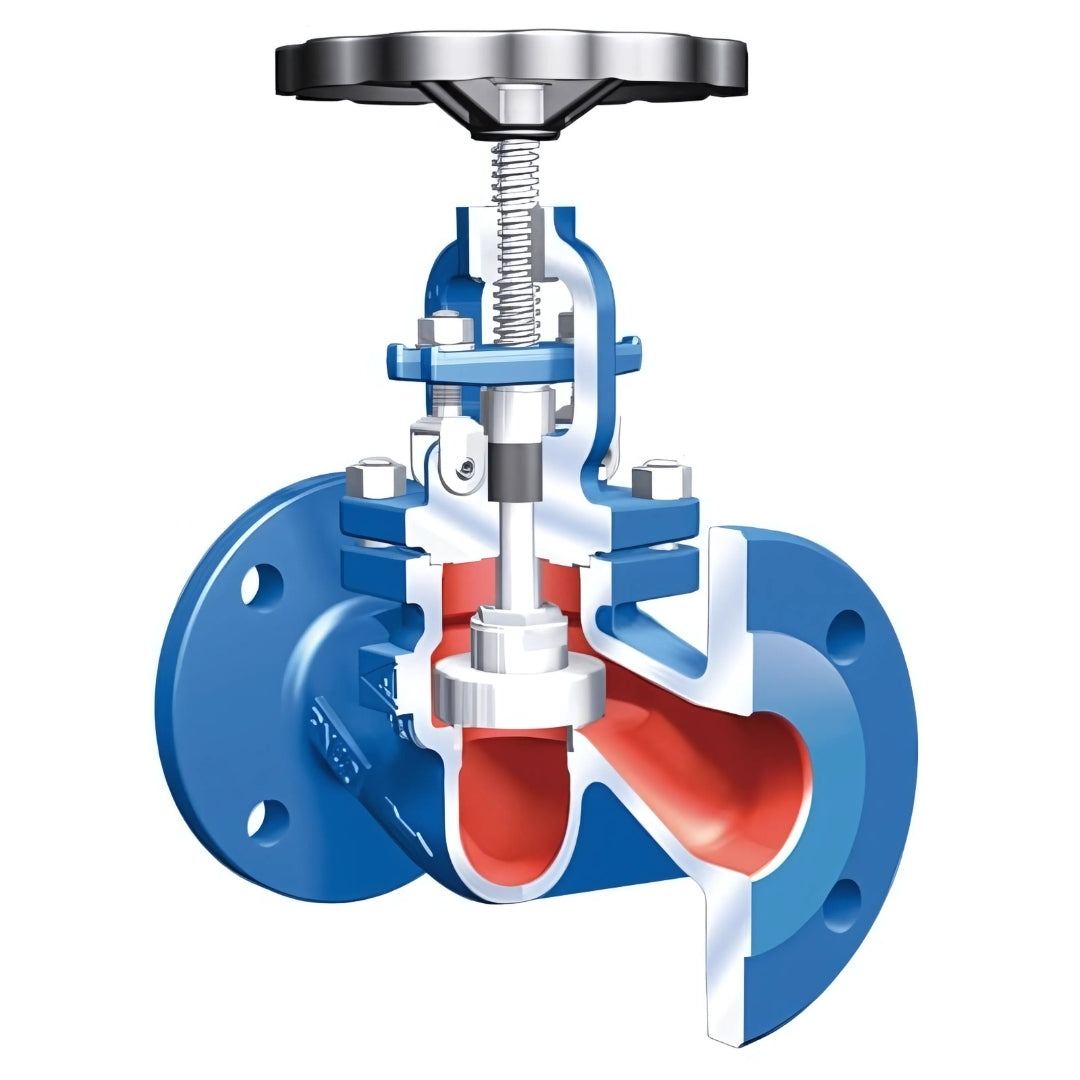Steam Valves
Ari Armaturen STOBU Gland Packed Globe Valve (Flanged PN40, Cast Steel Body)
Ari Armaturen STOBU Gland Packed Globe Valve (Flanged PN40, Cast Steel Body)
Couldn't load pickup availability
The Ari Armaturen STOBU Gland Packed Globe Valve with PN40 flanged ends and a cast steel body is engineered for accurate flow regulation and reliable shut-off in high-pressure process systems. Featuring a linear globe valve design, it enables precise throttling of steam, gas, or liquid media, offering stable and repeatable control even under demanding operating conditions.
Manufactured from high-grade cast steel, the body delivers superior mechanical strength and excellent performance in elevated temperature and pressure environments. This makes the valve suitable for use in power plants, petrochemical facilities, industrial steam lines, and thermal oil circuits. The gland packing system ensures a secure and adjustable seal around the valve stem, helping prevent leakage and reducing maintenance requirements. The PN40 pressure rating ensures compatibility with high-pressure pipelines, while the flanged ends support secure, standardised installation.
Backed by ARI Armaturen’s reputation for precision and quality, the STOBU Globe Valve delivers dependable performance, durability, and long service life in critical flow control applications.
Key Features
Cast Steel Body
Rugged and heat-resistant, ideal for demanding industrial use including steam and thermal oil systems.
PN40 Flanged Connections
Supports high-pressure installations up to 40 bar with standardised, secure bolted flanges.
Gland Packing Stem Seal
Reliable sealing solution with easy adjustability for in-service maintenance.
Precise Throttling Control
Globe-style flow path allows for linear flow modulation with tight shut-off capability.
Built for Elevated Temperatures
Performs well in high-temperature systems including boiler outlets and process heaters.
Versatile Industrial Applications
Used in energy generation, chemical processing, and high-pressure control circuits.
Share

FAQ's
What is the difference between a valve and an actuator?
What types of actuators are available?
The main types of actuators are:
Pneumatic actuators – use compressed air for fast, reliable operation.
Electric actuators – use electrical power for precise control.
Hydraulic actuators – use fluid pressure for high-torque applications.
Each type offers unique advantages depending on the environment, media, and system control needs.
How do I choose the right actuator for my valve?
To select the correct actuator, consider:
Valve type and torque requirement
Power source available (air, electric, or hydraulic)
Operating environment (temperature, humidity, hazardous area)
Control signal type (on/off or modulating)
Matching actuator torque and compatibility with the valve’s ISO mounting ensures reliable performance.
What are the main types of valves used in automation?
The most common valves in automated systems include:
Ball valves – for tight shutoff and quick operation.
Butterfly valves – for larger flow control with compact design.
Globe valves – for precise throttling and flow regulation.
Check valves – to prevent backflow.
Gate valves – for full bore flow isolation.
What’s the difference between a double-acting and spring-return actuator?
Double-acting actuators use air (or power) to both open and close the valve.
Spring-return actuators use air to open (or close) the valve, and a built-in spring to automatically return it to a safe position when power or air is lost — ideal for fail-safe operation.
How often should valves and actuators be serviced?
Regular maintenance intervals depend on operating conditions, but a good rule of thumb is to inspect every 6–12 months.
This includes checking for leaks, lubrication, seal wear, and actuator responsiveness to prevent unexpected downtime.

